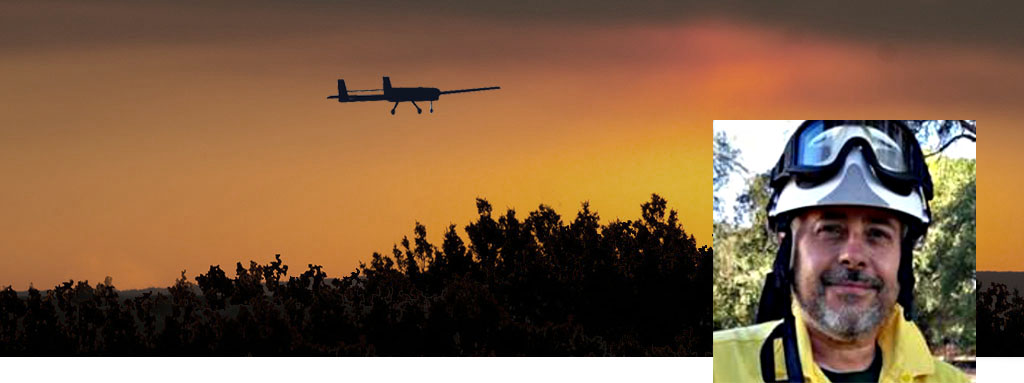“UAS/RPAS permit continuous and detailed real-time monitoring of a fire, even in areas with little radio or telephone coverage.”

Juan Sánchez Ruiz is Director of the Regional Operations Centre for the Andalucía Forest Fire Extinction Service.
![]()
For some years now INFOCA has been betting on the use of RPAS technology and on implementing it in fire extinction operations. Therefore – and in spite of the fact that testing of fixed wing aircraft already began in 2011 with quite good results – it wasn’t until 2017 that the first real test operations were conducted.
As a result of these operations, since the 2018 high-risk period, we have been continuously developing this service, which today is just one more solution for providing support for fighting large forest fires in our operation. However, this service is currently focused on some types of (RPAS) operations with some logical limitations mainly due to the need to maintain full security conditions when manned and unmanned aircraft share airspace.
This situation is not exclusive to the INFOCA Plan but can also be detected in other fire extinction devices. However, regardless of this limitation for their use, the future, and the potential variety of missions that RPAS can perform could be as broad as our imagination.
There are examples of this from the moments prior to declaring a fire, where RPAS can be used in pre-emergency, risk, or fire prevention situations, in support of a prescribed burn, evaluation of potential risks, preventive surveillance tasks etc.
Already, we can highlight the important contribution (of RPAS) while a fire is active or during extinction, especially at night, for determining the perimeter, monitoring a fire’s evolution, identifying affected or threatened areas, as well as for the safety of the personnel working in a sector, determining hot spots or secondary fires etc.
RPAS permit continuous and detailed real-time monitoring of a fire, even in areas with little radio or telephone coverage, where they can also act as communications relays and provide support for air communication. Ultimately, this is a tremendously useful tool, and that is with without even considering their possible use as a fire extinction aircraft, or as a support tool for subsequent restoration of areas affected by a fire.
Out of this important variety of missions, not all have been implemented yet. Some are considered only as possibilities for a not-too-distant future. However, others are already seen as a commercial service that is available and for hire…and even though others are currently at an advanced stage of development, we do not know if they will become widely available as a commercial service.
Therefore, we have before us a tool with a future that is wide open to technological advances that will be incorporated into its development, sometimes almost working against the clock, but which undoubtedly already plays a leading role within the range of work that must be performed in the extinction of a forest fire for the INFOCA Plan.

